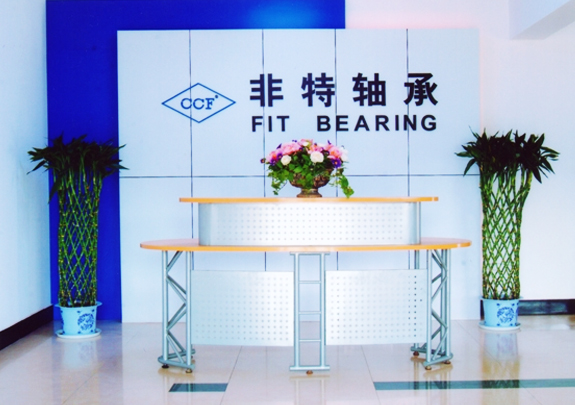Industrial Motor Bearing
VIEW DETAILS
VIEW DETAILS

Zhejiang Fit Bearing Co., Ltd. was established in November 2003 with a registered capital of USD 2 million. The plant covers an area of 35,000 square meters and 20,000 square meters, with more than 120 workers and more than 20 technical management personnel.
At the beginning of its establishment, the company specialized in producing all kinds of low-noise long-life ball bearings. As a professional China Industrial Motor Ball Bearings Manufacturers and Industrial Motor Ball Bearings Suppliers, After years of development in the bearing industry, we have accumulated rich experience in production and management. In 2013, we began to vigorously develop agricultural machinery parts and construction machinery parts. At present, we have formed a team with exquisite technology and excellent management, capable of R&D, manufacturing, sales and service in the bearing industry and agricultural machinery parts. After years of hard work and development, we have formed a capable R&D and manufacturing team. They have rich knowledge and experience in materials, heat treatment, machining and grinding. There are currently 9 professional R&D engineers responsible for the development of new products.
The main shaft bearing is the most important component in the engine. If the main shaft bearing fails, it will directly cause the engine to stop running. In order to improve the reliability of the eng...
Read MoreBearing failure is a common problem during the operation of bearings, and the form of wear is a type of bearing failure. Wear can also cause significant damage to bearings, and repairing a few pieces ...
Read MoreThe working temperature of cylindrical roller bearings depends on various factors, including the heat output of all relevant heat sources, the heat flow rate between heat sources, and the heat dissipa...
Read MoreWhat are the different types of ball bearings commonly used in Industrial Motor Ball Bearings?
Several types of ball bearings are commonly used in industrial motor applications, each designed to meet specific requirements. The choice of bearing type depends on factors such as load capacity, speed, precision, and environmental conditions.
Deep Groove Ball Bearings:
Design: These bearings have deep raceway grooves, making them suitable for both radial and axial loads.
Application: Widely used in electric motors due to their versatility and capability to handle high radial loads.
Angular Contact Ball Bearings:
Design: Designed to support both radial and axial loads by angling the contact points between the balls and the inner and outer raceways.
Application: Commonly used in applications where axial (thrust) loads are significant, such as high-speed motor applications.
Thrust Ball Bearings:
Design: Specifically designed to accommodate axial loads in one direction.
Application: Used in motor applications where axial loads need to be supported without radial load requirements.
Self-Aligning Ball Bearings:
Design: Able to accommodate misalignment between the shaft and the housing.
Application: Suitable for applications where shaft deflection or misalignment is expected, providing enhanced performance in challenging conditions.
Miniature Ball Bearings:
Design: Smaller than standard ball bearings, often with an outer diameter of less than 30mm.
Application: Used in small electric motors and precision instruments where space is limited.
Radial Ball Bearings:
Design: Designed to support radial loads perpendicular to the shaft.
Application: Commonly used in applications where the primary load is radial, such as in electric motors.
Maximum Capacity Ball Bearings:
Design: Designed with a larger number of balls to increase load capacity.
Application: Used in applications where higher radial loads are expected, allowing for increased load-carrying capacity.
What are the key design features of Industrial Motor Ball Bearings?
Industrial motor ball bearings are designed to meet the demands of various industrial applications, providing reliable and efficient operation in electric motors.
Material Selection: Bearings are often constructed from high-quality materials such as chrome steel, stainless steel, or ceramics. The choice of material depends on factors like load, speed, temperature, and resistance to corrosion.
Cage Design: The cage holds the balls in place and facilitates their movement. Different cage designs, such as stamped steel, machined brass, or polyamide, impact factors like friction, heat generation, and overall stability. The cage should be designed to minimize friction and wear.
Sealing and Shielding: Seals and shields protect the bearing from contaminants such as dust and moisture. Depending on the application, bearings may have various sealing options, including single or double seals, or shields. Effective sealing enhances the bearing's lifespan and performance.
Precision and Tolerance: Industrial motor ball bearings require high precision to ensure smooth and reliable operation. Tight tolerances help minimize play and reduce the risk of misalignment, contributing to improved efficiency and reduced wear.
Internal Clearance: Bearings often have a specified internal clearance, which affects their ability to accommodate thermal expansion and contraction. Proper internal clearance helps prevent overheating and ensures optimal performance in industrial motor applications.
Lubrication: Lubrication is crucial for reducing friction, dissipating heat, and preventing wear. Industrial motor ball bearings may use grease or oil lubrication, and the choice depends on factors like speed, temperature, and operating conditions.